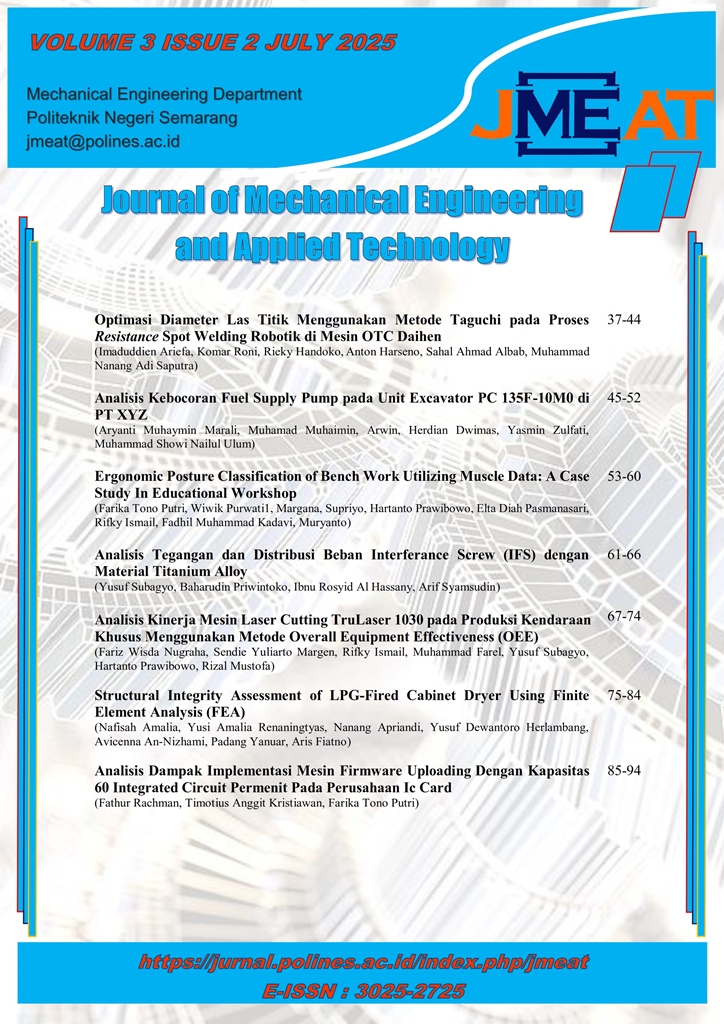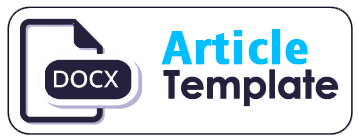ANALISIS KINERJA MESIN LASER CUTTING TRULASER 1030 PADA PRODUKSI KENDARAAN KHUSUS MENGGUNAKAN METODE OVERALL EQUIPMENT EFFECTIVENESS (OEE)
DOI:
https://doi.org/10.32497/jmeat.v3i2.6761Abstract
The manufacturing industry is continuously challenged to improve production efficiency and quality. Production machinery plays a crucial role in supporting smooth manufacturing processes, especially in the fabrication of special vehicle components. One such machine is the TruLaser 1030, a 2D laser cutting machine manufactured by TRUMPF, which is used for processing body and accessory parts in special vehicles. This study aims to evaluate the performance of the TruLaser 1030 machine using the Overall Equipment Effectiveness (OEE) method, as well as to identify damaged machine components and maintenance requirements. The Total Productive Maintenance (TPM) approach is applied to enhance equipment effectiveness, prevent breakdowns, and ensure product quality and workplace safety. The OEE methodology involves three main parameters: Availability, Performance Rate, and Quality Rate. The results show the machine’s availability at 94%, performance rate at %, and quality rate at 97.1%. These findings suggest that the TruLaser 1030 machine operates at a relatively optimal level; however, regular evaluations of work systems and maintenance programs are necessary to maintain stable performance and continuously improve productivity.
Downloads
Published
Issue
Section
License

This work is licensed under a Creative Commons Attribution-NonCommercial-ShareAlike 4.0 International License.
Authors who publish articles in this journal agree to the following terms:
The author owns the copyright and grants first publication rights to the Journal with work simultaneously licensed under a Creative Commons Attribution License which allows others to share the work with the work acknowledged and first published in this journal
Authors may enter into separate, additional contractual agreements for the non-exclusive distribution of the journal's published version of the work (for example, posting it to an institutional repository or publishing it in a book), with an acknowledgment of the first publication in this journal.
Authors are permitted and encouraged to upload their work online (for example, in an institutional repository or on an author's website) before and during the submission process, as this can lead to productive exchanges, as well as earlier citations and a larger number of citations of the published work. (See the impact of open Access).






